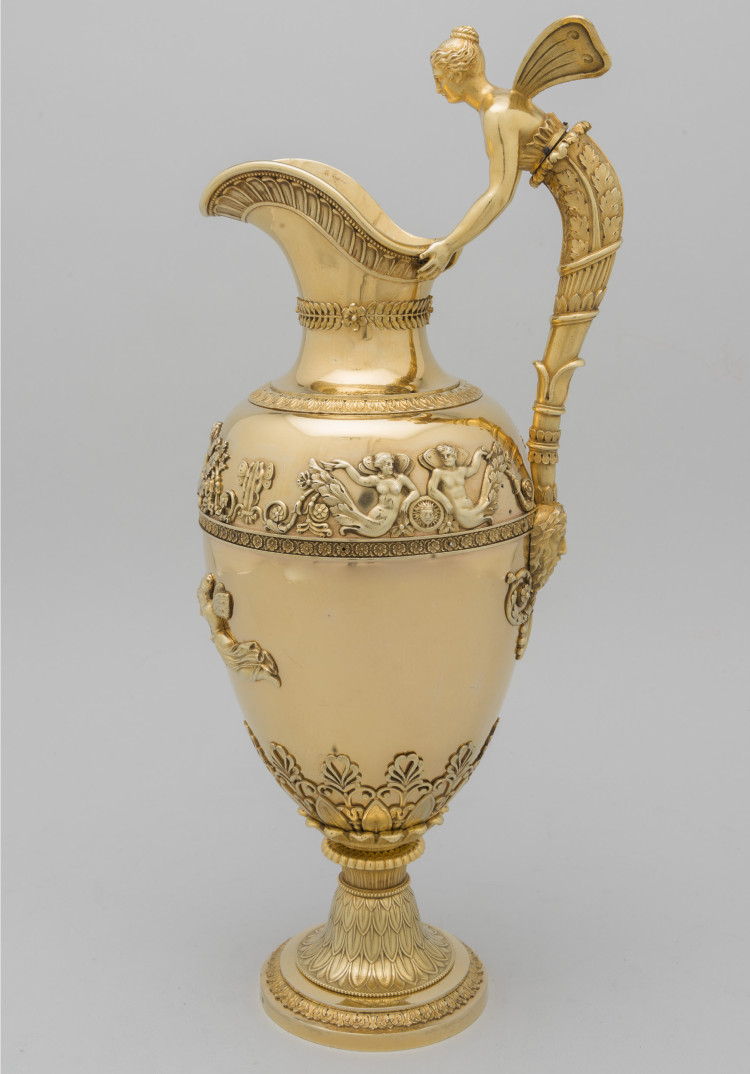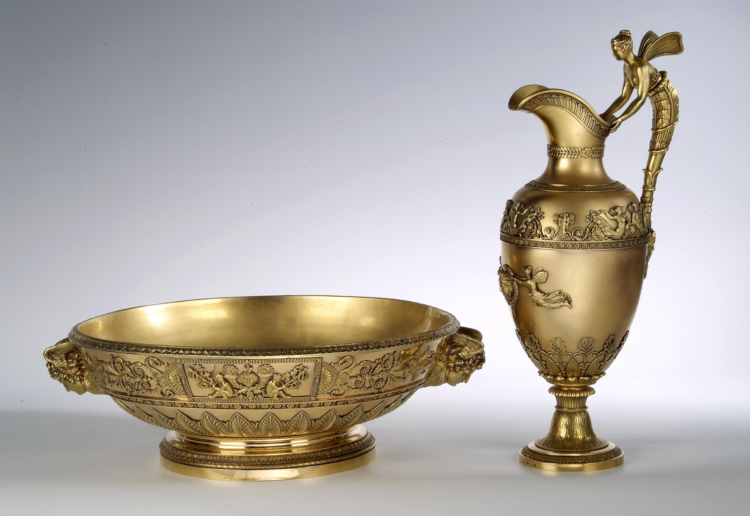Thanks to the political gains made during the reign of Alexander I (1801–1825), upon the completion of the Napoleonic Wars the so-called Alexandrian Empire style came to be highly regarded in Russia, a fondness that would last through to the celebrations marking the 100-year anniversary of the Patriotic War and beyond.
Nevertheless, artisans in St. Petersburg largely followed European styles, basing themselves on the preferences of the English and French royal courts. Last names like Buch, Bunzl and Keibel tell us that the influence of Scandinavia and Germany lasted well into the early 19th century. The marked use of gilding in their wares to underscore the wealth of their clients became a hallmark of Russian silver. Johann Wilhelm Keibel, a workmaster active between 1812 and 1862, inherited the firm form his father, Otto Samuel (1768–1809), and initially occupied himself with making silver tableware in the Empire style in the spirit of the French jewelers Biennais and Odiot.
The handle and vessel of this handwashing pitcher, part of a larger washstand set, are decorated with a depiction of Psyche, one of the most popular characters of the Empire style.

